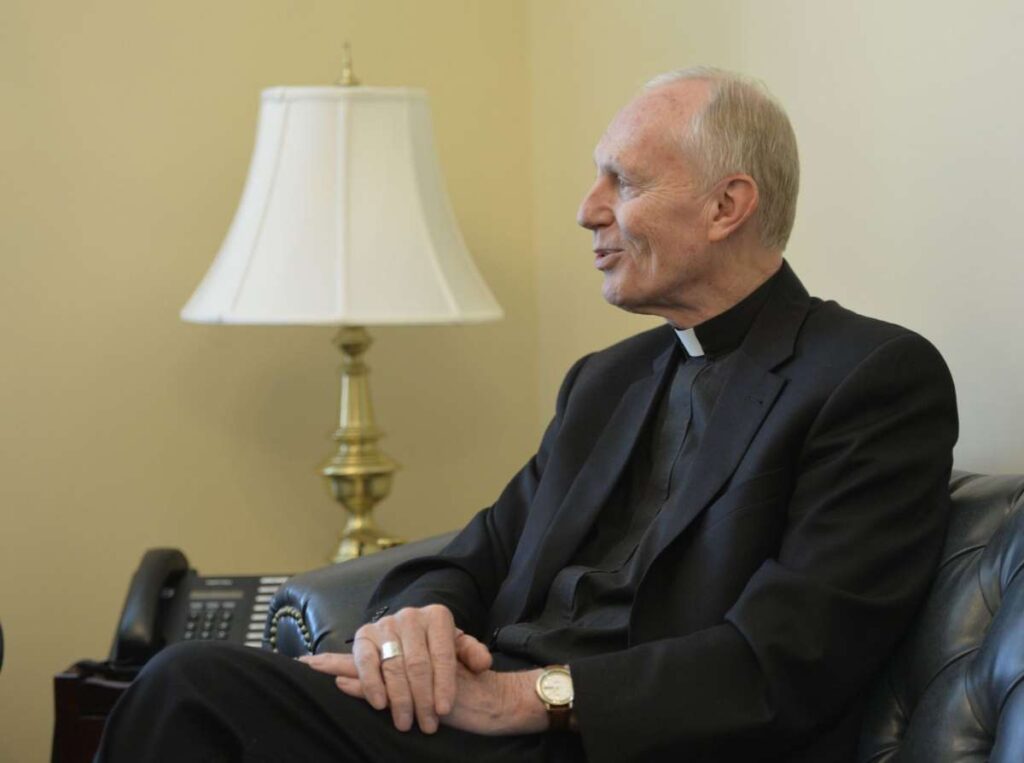ALBANY (NY)
Times Union [Albany NY]
September 11, 2021
By Chris Churchill
Lawsuits filed under the law make clear Albany diocese did too little for far too long.
This column expresses the views of the author, separate from those of the Times Union.
ALBANY — The window opened by the Child Victims Act is closed. The lawsuits are filed, though the legal wrangling continues.
We will hear more about that wrangling in the months ahead, as numbers and settlements are discussed and debated. But this much, at least, is already clear: Claims filed under the legislation have been devastating for the Roman Catholic Diocese of Albany.
For one thing, the reputation of former Bishop Howard Hubbard is in tatters.
Once a celebrated and beloved figure for many area Catholics, Hubbard has been directly accused of sexual abuse in at least seven Child Victims Act lawsuits. Though he denies the allegations, the volume of claims may have dismayed many who believed so fervently in Hubbard’s innocence and decency.
Hubbard is also named in dozens of lawsuits accusing him of covering up the abuse of children, and, as the Times Union recently reported, he has acknowledged that the diocese under his watch shielded priests facing abuse allegations from accountability.
Hubbard has his rationalizations and prevarications, but whatever. Who, at this point, wants to hear them?
The bottom line is that the diocese is continuing to experience a long, painful reckoning — with financial consequences still to come.
While Bishop Edward Scharfenberger recently told me the diocese is not planning to file for bankruptcy protection, as the Boy Scouts of America and four New York dioceses have done, he conceded it remains a possibility. The diocese has been named in more than 300 lawsuits, leaving it shell-shocked.

“A lot of our people are having a very hard time coming to terms with it,” Scharfenberger said. “Any claim is both a scandal and a tragedy, and to know that people were so hurt by predatory individuals who wore a collar, it’s a tough thing.”
The Child Victims Act, debated for a decade before state lawmakers passed the measure in 2019, temporarily scuttled time limitations to allow lawsuits — and accusers filed nearly 10,000 statewide before the window closed in August.
It has been nearly two decades since pedophile priest revelations rocked Boston and cities around the world. By this point, the abuse scandal is familiar news.
Still, the scope and scale of allegations detailed in Child Victims Act litigation is shocking, and nauseating. Reading through the lawsuits is like getting punched in the stomach, again and again.
No, the church wasn’t the only place where the vulnerable were victimized. Child Victims Act lawsuits make that clear, too. The sexual abuse of children was, and is, a widespread societal problem.
But consider the case of Br. Clement Murphy, who worked at Notre Dame-Bishop Gibbons and St. Paul the Apostle schools Schenectady starting in the 1960s. Murphy is accused in 17 separate lawsuits, suggesting he was responsible for a staggering amount of abuse and pain.
If so, how many may have known but looked away? How much did silence allow new horrors?
Colleen Garbarini, one of Murphy’s accusers, told me she never planned to file a Child Victims Act claim. Then she learned that Murphy, who is on the diocese’s list of credibly accused clergy, had been accused of abuse 10 years before her elementary school experience with him beginning in the late 1970s.
With that came the realization that her suffering could have been prevented, if only somebody had bothered to do something. Enraged, she decided she would, in fact, file a lawsuit.
Garbarini, who is 50 and lives in Schenectady, told me she remembers Murphy, now deceased, setting a chair on the playground. He was grooming children, she believes, for his predation. The diocese, she says, must have known he was a danger.
Seventeen lawsuits.
“It’s almost like we could have our own little support group,” Garbarini said.
When we spoke, Scharfenberger expressed hope that the church could be a place of healing for the abused. Love for the oppressed and victimized has long been at the heart of Jesus’ message and church teaching, of course, and could perhaps be a path back to trust after this alienating scandal.
But Garbarini said the diocese’s public support for victims is belied by the hardball tactics of its lawyers. She remains furious at the diocese. She is hardly alone.
A quick update: In a July column, I wrote about Child Victims Act allegations lodged against the Rev. John Varno, who, to the dismay of John McIntyre and other congregants at the Our Lady of Grace in Ballston Lake, continued to preside over Masses at three area churches.
That was because of a loophole. By diocese policy, you see, allegations made directly to the diocese or law enforcement triggered an investigation and the removal of the accused priest from service.
However, there was no immediate investigation or removal of the priest for allegations made only in civil lawsuits. Yet if the foremost objective is to protect children, I asked, why should it matter how the complaint is filed?
Scharfenberger has subsequently closed the loophole.
“I want to do everything I possibly can,” he told me. “I don’t want there to be any hidden corners. I don’t want there to be any loopholes.”
cchurchill@timesunion.com ■ 518-454-5442 ■ @chris_churchill
